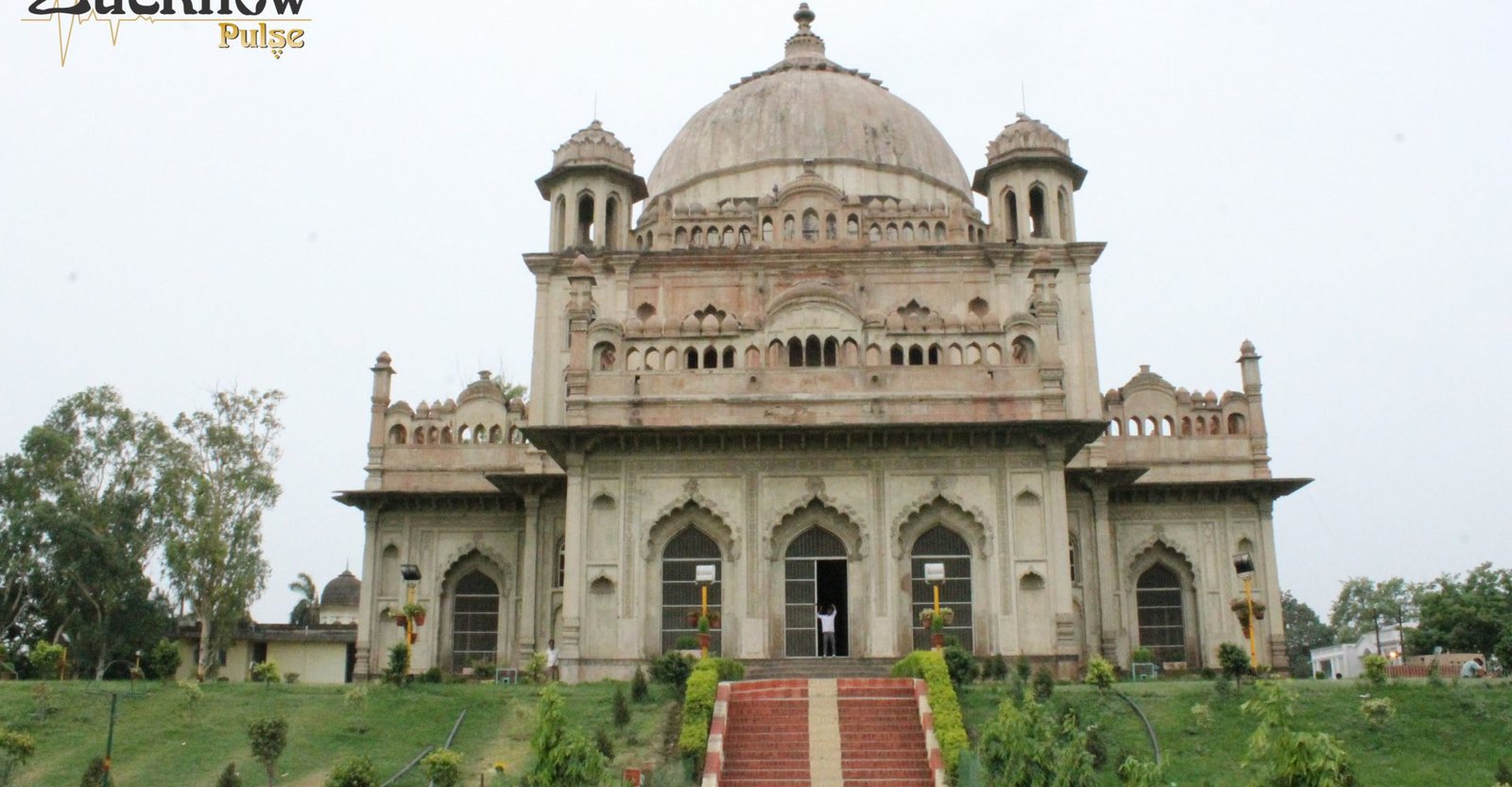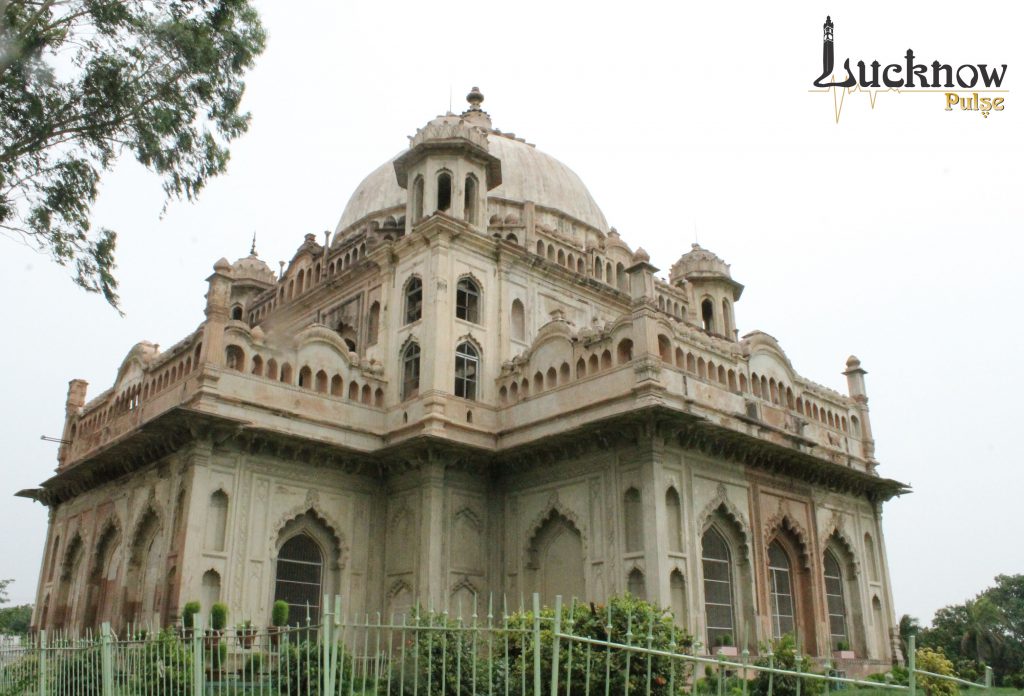Lucknow, the very captivating and the second most sought-after tourist destination in the state of Uttar Pradesh spreads along the picturesque banks of the river Gomti. The culturally-rich city is known as much for its glorious past, refined diction, elegant mannerisms, and Urdu poetry, as much as it is for its majestic monuments.
The Nawabs of Awadh are known for their lavish lifestyles and extravagance. They built several monuments in Lucknow that contributed to the beauty of the city landscape. The Kaiserbagh area of the city is specially known for the many picturesque monuments from the Nawabi era that give the city its characteristic old world charm.
The maqbara of Nawab Saadat Ali Khan holds a prominent place in the history of the Nawabs of Awadh. Nawab Saadat Ali Khan was regarded an able ruler and builder. He is credited with having built several grand kothis (palaces) in Lucknow such as Farhat Buksh Kothi, Hayat Baksh Kothi, Dilkusha and the popular Lal Baradari.
After the death of Nawab Saadat Ali Khan, his son Nawab Ghazi-ud-Din Haider built the grand maqbara in the memory of his father at Kaiserbagh near the Begum Hazrat Mahal Park.
History of the Maqbara
The 6th Nawab of Awadh, Nawab Saadat Ali Khan being an able administrator was also an enthusiastic builder. Many splendid palaces and monuments were built in Lucknow during the reign of Nawab Saadat Ali Khan such as Khursheed Manzil, Munavar Baksh Kothi, Dilkusha and Chaupar Stables to name a few.
A prominent shift in the architectural designs was observed during the rule of Nawab Saadat Ali Khan when Awadhi-style architectural designs were slowly abandoned to be taken over by the European-style designs. The modern European designs can be seen in the construction of Imambaras, baradaris, kothis, bagiyas (gardens), residences, and courtrooms built during and after the reign of Nawab Saadat Ali Khan.
After the death of Nawab Saadat Ali Khan on 1st July 1814, his eldest son Nawab Ghazi-ud-Din Haider ascended the throne of the Province of Awadh and ordered the construction of two maqbaras (mausoleums), one for his father and the other for his father’s beloved wife Mursheed Zadi. Both the maqbaras of Nawab Saadat Ali Khan and Khursheed Zadi (also known a Murshad Zadi) are located next to each other.
The construction of the maqbara of Khursheed Zadi had started when Nawab Saadat Ali Khan was alive, but unfortunately he could not see the maqbara in his life time. Later, Nawab Ghazi-ud-Din Haider completed the construction of both the mausoleums during his tenure.
Unfortunately, the baradaris, kothis, and gardens surrounding the maqbara of Nawab Saadat Ali Khan were destroyed heavily during the rebellion of 1857 by the British troops.
Architecture of the Maqbara
The maqbara has a big semicircular dome that is incorporated with beautiful narrow ribbings. A big guldasta (flower arrangement) type architectural design beautifies the top portion of the maqbara.
The maqbara of Murshid Zadi is built across the maqbara of Nawab Saadat Ali Khan in the south-east direction. Both the mausoleums were built with the distinctive lakhauri (flat bricks) along with chunam (lime mortar) to strengthen the overall construction of the mausoleums.
The mausoleum of Nawab Saadat Ali Khan is embellished with subtle stucco designs and is an attractive example of delicate Indo-European architectural brilliance.
The maqbara is surrounded by a wonderful garden that has beautiful seasonal plants, flowers and trees. The lush green garden tends to enhance the overall exquisiteness of the maqbara.
The Present State of the Maqbara
The maqbara of Nawab Saadat Ali Khan has been preserved well by the Lucknow circle of the regulatory body, the Archaeological Survey of India. The artistic architectural brilliance of the maqbara is leaves visitors awestruck. The mausoleum might be small in size but it looks graceful and attractive even today. The maqbara is open for visitors at all times and can be visited at any time of the day.
Do visit the Kaiserbagh area to have a feel of the times of the Nawabs, the royal opulence that they were known for and the disgrace that they had to face at the hands of the British during and after the Mutiny of 1857. A walk through the area will help you retrace your steps in the history of Awadh and is enough to make you feel at home in the city of Nawabs, Lucknow.



Comment here